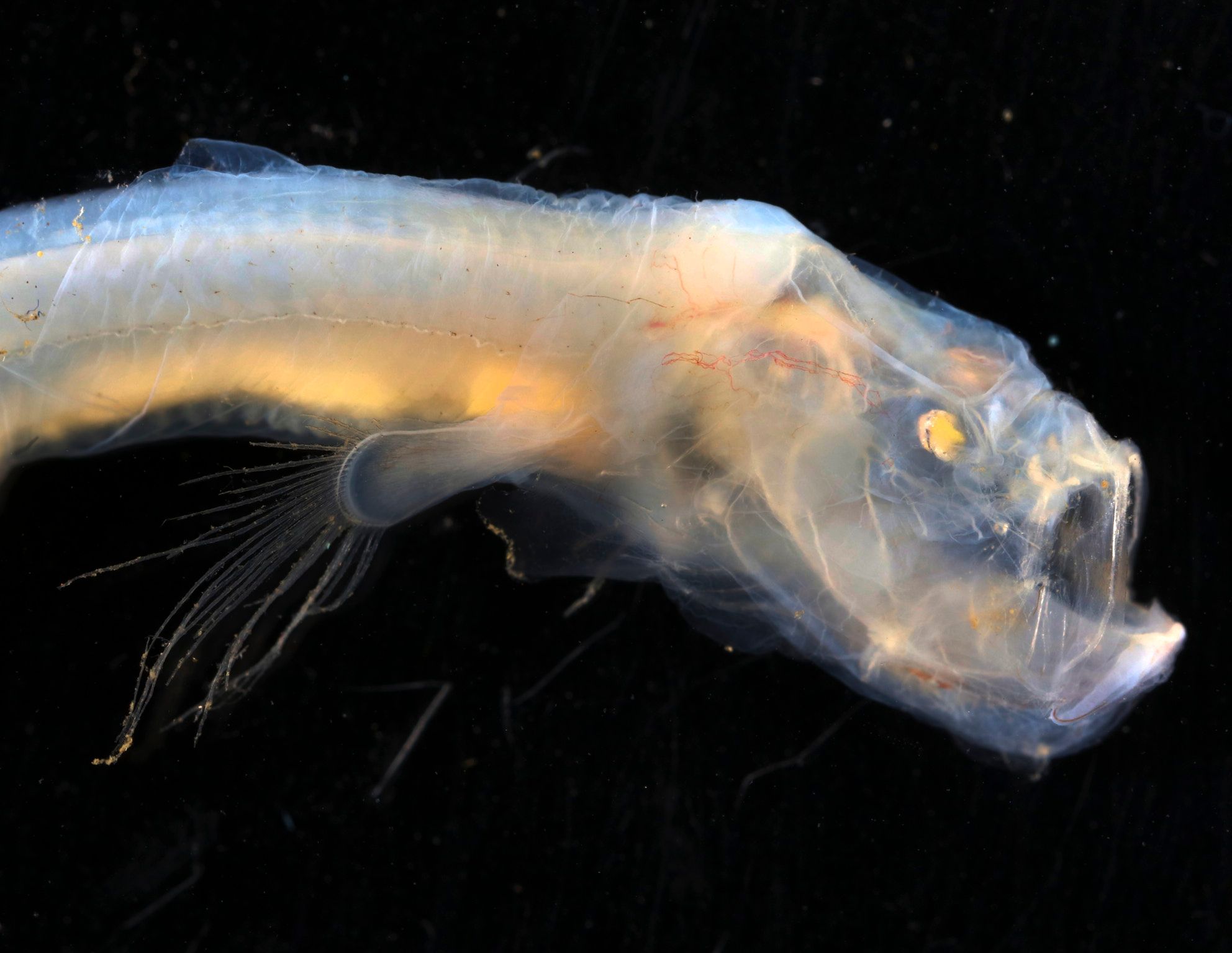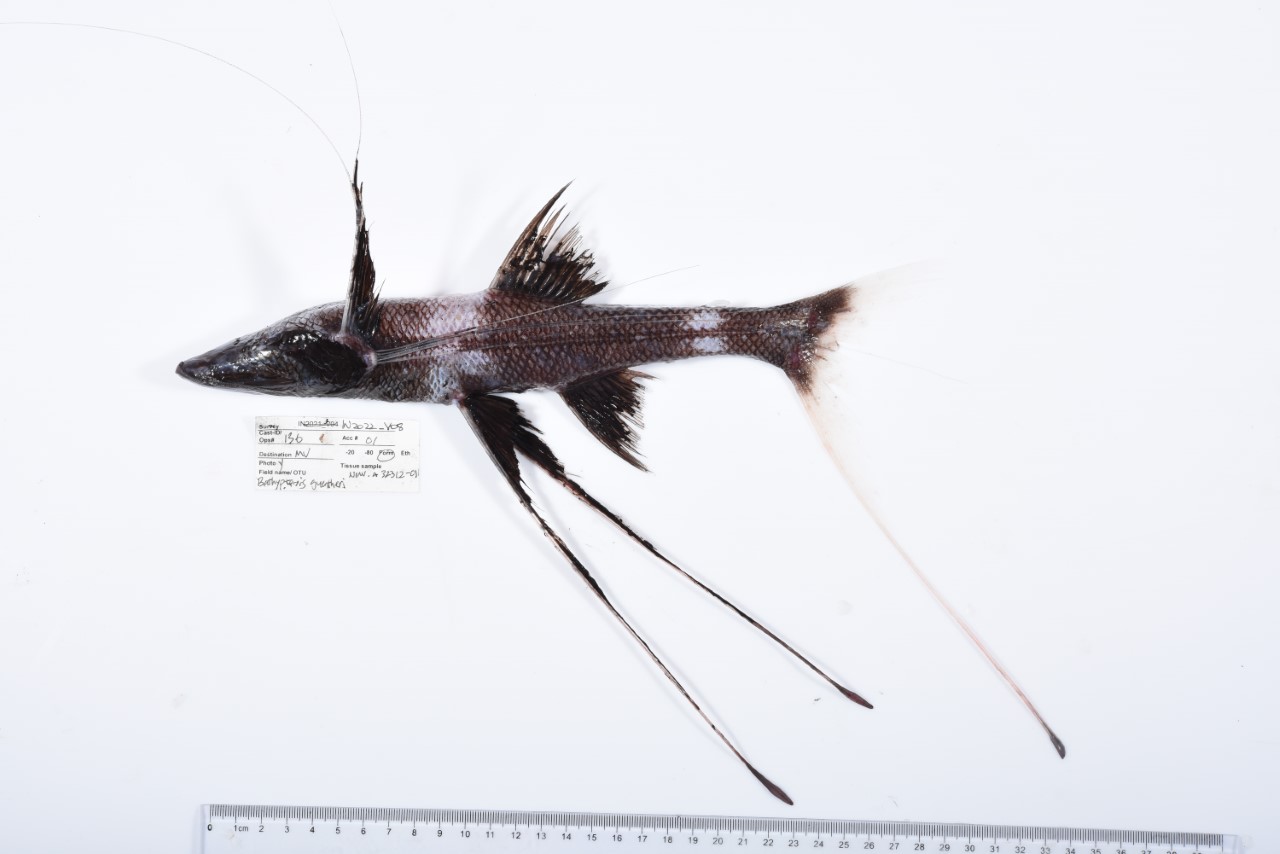'Spectacular' and bizarre ocean creatures (like stilt-walking fish) found living near deep-sea volcanoes
Light-up fish and ancient volcanic structures are among the discoveries of a new expedition to map the remote Cocos Islands in the Indian Ocean.

Fluorescent-eyed fish and ancient volcanic cones are among the amazing discoveries of a new expedition that mapped a section of the Indian Ocean.
Researchers recently completed a 35-day expedition around the Cocos Islands, an archipelago southwest of the Indonesian island of Sumatra. The islands are now the center of the Cocos (Keeling) Islands Marine Park, a 180,330 square-mile (467,054 square kilometers) protected area that has never before been mapped in high resolution. According to the Museums Victoria Research Institute, the mapping revealed underwater mountain peaks and weird marine life, such as a blind, gelatinous eel that was previously unknown to science.
"The fish are the standout deep-sea fashionistas," expedition chief scientist Tim O'Hara of the Museums Victoria Research Institute told Live Science in an email. "They come in all shapes and sizes, with light organs, lures, rays modified into tripods or camouflage appendages, and huge (or missing) eyes. Each species superbly adapted to the extreme deep-sea environments."
Mountainous territory
The tiny Cocos Islands, also known as the Keeling Islands after the British sea captain who first reported their existence in 1609, are a pair of atolls made up of 27 coral islands. The islands are actually the peaks of two enormous seamounts.
Related: Weird deep-sea worm looks like a luminous lump of spaghetti
The new mapping revealed that a smaller rise is snuggled between these peaks, and sits 1,148 feet (350 meters) below sea level, according to the Commonwealth Scientific and Industrial Research Organization of Australia (CSIRO).
"It’s truly an honour to see, for the first time, these stunning underwater features revealed from the deep,” Nelson Kuna, a hydrographic surveyor from CSIRO who was on the research expedition, said in a blog post about the findings.
Sign up for the Live Science daily newsletter now
Get the world’s most fascinating discoveries delivered straight to your inbox.
Until now, scientists had only a fuzzy understanding of this undersea topography from satellite data.
"Some seamounts predicted to be shallow had subsided into the deep-sea, others had cones or drowned reefs that almost reached the surface. The sheer size of some of the features was amazing," O'Hara said.
For example, the Muirfield Seamount, which was discovered in 1973 when a British cargo vessel rammed into it, turned out to be 43.5 miles (70 kilometers) across and 2.8 miles (4.5 km) high.
Deep-sea life
The researchers collected footage and samples of the complex web of life around the atolls. They found the blind eels 3.1 miles (5 km) below the surface. In those depths, the scientists also found an array of bizarre fish, including tribute spiderfish (Bathypterois guentheri), which have weird, elongated fins that act like stilts, enabling the fish to perch above the ocean floor and capture small crustaceans as they drift by.

The scientists also observed pelican eels (Eurypharynx pelecanoides), which have huge, loosely hinged jaws that enable them to swallow prey bigger than themselves, and toothy Sloane's viperfish (Chauliodus sloani), which have mouths bristling with needle-sharp teeth and light-up organs along their sides to attract prey. Also at home in the marine protected area are highfin lizardfish (Bathysaurus mollis), deepwater bottom-feeders whose reproductive organs combine ovaries and testes — both are reproductively active at the same time.
"The sheer diversity of the invertebrate fauna was also spectacular," O'Hara said. "We collected every family of black corals, and hundreds of species of crustaceans and echinoderms. Many of these species will be new to science."
Future expeditions will collect free-floating DNA from the waters, another way to hunt for biodiversity. For now, O'Hara said, expedition scientists and their colleagues plan to identify and catalog the flora and fauna they discovered on their exploration of the region.
"We still have much to learn about these vast areas," O'Hara said.

Stephanie Pappas is a contributing writer for Live Science, covering topics ranging from geoscience to archaeology to the human brain and behavior. She was previously a senior writer for Live Science but is now a freelancer based in Denver, Colorado, and regularly contributes to Scientific American and The Monitor, the monthly magazine of the American Psychological Association. Stephanie received a bachelor's degree in psychology from the University of South Carolina and a graduate certificate in science communication from the University of California, Santa Cruz.









